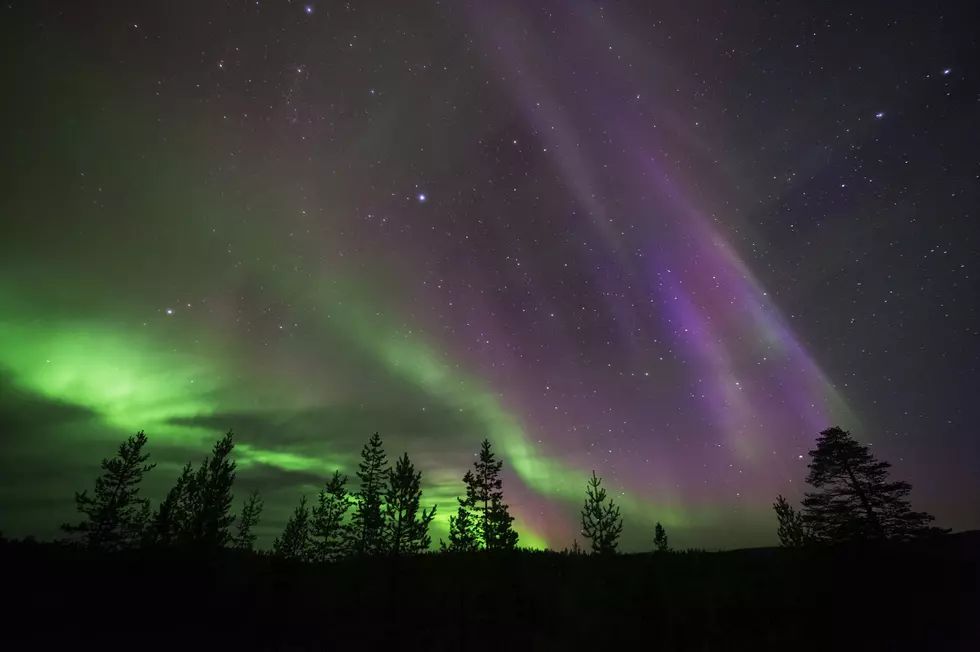
Northern Lights Could Be Seen In New York State After Huge Geomagnetic Storm
A large geomagnetic storm could bring the Aurora Borealis as far south as New York state.
The Aurora, or Northern Lights, are caused by giant solar winds that carry ionized particles that end up slamming into the Earth's atmosphere near the poles. This is what creates the greenish ghostly lights in the sky, though they're not often seen in latitudes as far south as places like New York City.
See Also: Meteor Shower Known For 'Fast and Bright' Bursts Coming to New York State
The Hill reports that the NOAA Space Weather Prediction Center issued geomagnetic storm alerts through Monday. The SWPC says that the latest solar storm could reach G4 levels, which is considered severe (G5 is considered the highest).
WTOP reports that the storms are expected to peak Sunday night into Monday night, giving areas such as New York the possibility of seeing the Northern Lights.
See Also: Fireball Lights Up the Night Sky Above New York State [VIDEO]
The Hill says that geomagnetic storms can also affect our navigation, communication and radio signals, though NOAA says that people "should not anticipate adverse impacts and no action is necessary".
Partial Lunar Eclipse
The Northern Lights aren't the only bit of space news happening this week.
Fox 13 News says that a faint lunar eclipse will occur late Sunday, into the early hours of Monday, March 25. A penumbral lunar eclipse occurs when the Moon becomes completely immersed in the penumbral cone of the Earth, without touching our planet's shadow.
See Also: FORECAST: Will New York State See Cloudy Skies for the Eclipse?
This will not be a total lunar eclipse though. Fox describes the event as a "slight dimming of the Moon's brightness", where if you "don't know when to look, you might even miss it." Basically, a portion of the Moon will appear darker than usual during the early morning hours.
The last total lunar eclipse was in November 2022, and the next one won't occur again until March 13, 2025.
Total lunar eclipses stand out more, as the Moon takes on a dark crimson red (or copper) color, which happens because sunlight reaching the Moon must pass through a long and dense layer of Earth's atmosphere.
